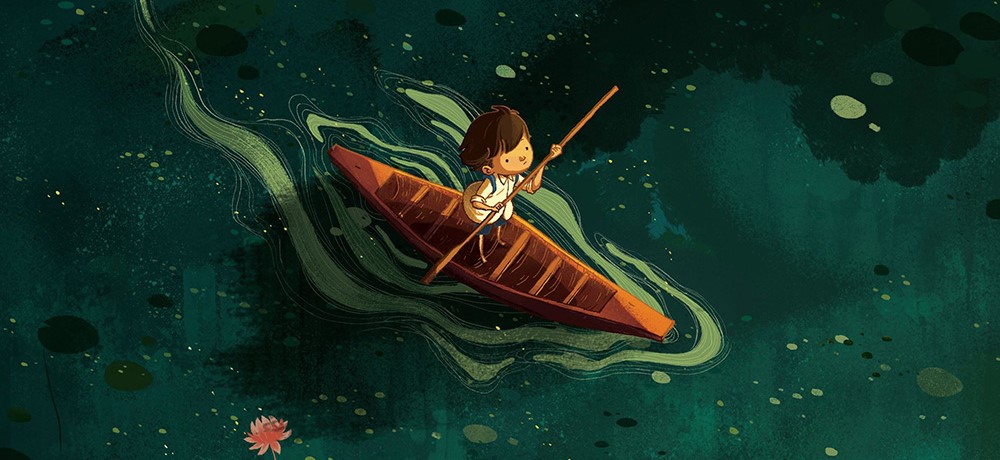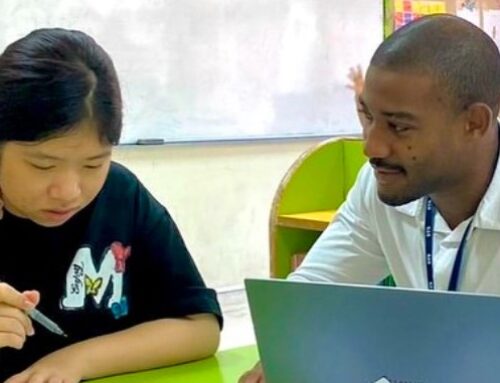Not only important for the foundational years of children’s development, but also to educate and inform foreigners about important traditions and key values held by a nation, the best-selling children’s books of any given country can reveal a lot about the readers.
But, what do the best-selling books say about Vietnam? Let’s find out together.
Diary of a Cricket, Tô Hoài
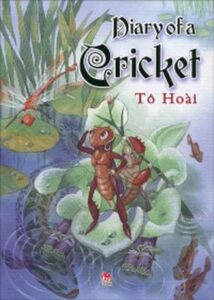
Adventure, life lessons and rebellion, this cricket-led child’s book has it all. Hoài tells the story of a cricket that finds independence and faces challenges with the help of other animals and people. The team of animals band together and help each other fight back against the injustices in life. The uplifting storyline and engaging writing style means this story is studied in Vietnamese schools, read to children at bedtime and used to encourage children to think for themselves. Hoài’s inspirational book has stood the test of time, too, since 1941 many generations can discuss the moral of their favourite childhood book, Diary of a Cricket.
One Vietnamese goodreads user simply writes ‘My childhood <3’ as a review – we think that says it all!
The Day I Woke Up Different, Andy A. Nguyễn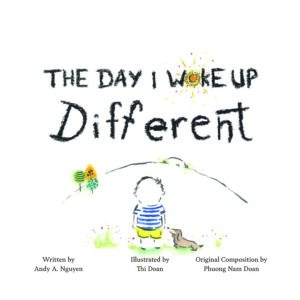
Skipping forward to a 2020 release, this story about identity and culture has resonated with many adult readers, as well as the children they’re reading to. Nguyễn’s story deals with a child growing up in a Vietnamese household in America, who starts to notice some stark contrasts between their own life and the American world outside. The protagonist goes on a journey of self-acceptance and realisation, discovering that although being different can feel lonely at times, it also makes you unique. The final line, “Be the BEST YOU and you can go far!”, has made this book a popular choice for Vietnamese parents to read to their children, as well as validate feelings of identity-confusion that children (and adults) may be feeling.
Nguyễn has been praised for his realistic representation and relatable content. He has combined Vietnamese culture and an excellent writing style to produce a real hit, and many reviews talk about how the experience depicted resonates with their own. The overarching theme of self-acceptance and dissection of identity means that Vietnamese children can be seen in a way that previously hadn’t been accessible to them.
The First Journey, Phung Nguyen Quang and Huynh Kim Lien
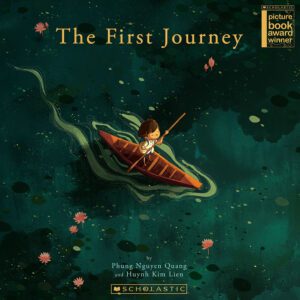 Winner of the Singapore Book Award 2018 and the Scholastic Picture Book Award 2015 (when it was still an unpublished work!), The First Journey has proved it is much more than just a children’s book. Their story takes place in ‘floating season’, which they explain in an interview is a natural phenomenon where the river overflows and submerges much of the land for months at a time. With roads being out of use, people use boats as transport – even children get to school by boat during this time!
Winner of the Singapore Book Award 2018 and the Scholastic Picture Book Award 2015 (when it was still an unpublished work!), The First Journey has proved it is much more than just a children’s book. Their story takes place in ‘floating season’, which they explain in an interview is a natural phenomenon where the river overflows and submerges much of the land for months at a time. With roads being out of use, people use boats as transport – even children get to school by boat during this time!
Using this as a starting point, the two authors created a boy who travels by boat to school…alone. His journey leads him to many dangers that are lurking just beneath him. The protagonist, An, faces this journey with courage knowing his friends will be there on the other side. The story helps children deal with metaphorical obstacles, themes of friendship and also independence. On top of creating a story that tackles these issues, Nguyen Quang and Kim Lien also illustrated the book themselves. Part of the appeal of this book must also be these beautiful illustrations, as they help bring the story to life. One of the truly beautiful aspects of the book is the depiction of the Vietnamese event of flooding, which their readers will have experienced.
The Story of Tấm and Cám
Now, we haven’t been able to list an author for this one as it is an ancient Vietnamese folktale! The storyline may sound somewhat familiar to us though, as it has a plot similar to the European tale of Cinderella. Tấm suffers the injustices of her stepmother and stepsister (Cám) until she is rescued by a fairy-godmother character. Just like in the Western version, she loses her slipper, which is later returned to her by the king who she marries. However, this is where the similarities end. Tấm is later killed by Cám, then reincarnated by murdered by Cám, again! This cycle or reincarnation-murder is repeated several times, until the king finds Tấm once again. Seeking revenge, Tấm offers Cám some ill-intentioned advice to bathe in boiling water, which kills the evil stepsister. As if this wasn’t revenge enough, Tấm packs the stepsister’s flesh into jars and ships it to the stepmother, who mistakes the flesh for food. A crow informs the stepmother of the actual contents of the jar, which causes her to die from shock.
Although the story has a dark twist at the end, this is actually a popular story for children in Vietnam. The themes of beauty within and persistent graciousness are valued by the audience, and consequently passed on from generation to generation. The story represents victory for the good people and a restored fairness, which has long since been valued within the culture. There is not a child in Vietnam who has not heard of this tale!
A Different Pond, Bao Phi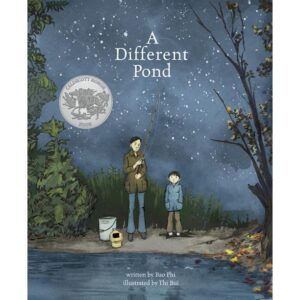
Another story with an award to its name, A Different Pond holds the 2018 Caldecott Honour title (amongst many others). The Caldecott Awards website identifies the themes of family, love and survival in the story, as well as the immigrant experience. Similar to the story by Nguyễn, The Day I Woke Up Different, there is a contrast between American and Vietnamese cultures.
The story is a reflection on a fishing trip that took place between a father and son in Minneapolis. As the duo fish to feed their family, the father begins to tell his son about a similar and yet far away pond he remembers in Vietnam. The memory recalled creates a lovely unification of their lives in America and the father’s life in Vietnam. Many readers feel that the story offers a taste of home for Vietnamese children who have moved away, as well as offering children in Vietnam an appreciation for their own childhood experiences.
So, what does all this mean?
At Impact, we want to know as much as possible about our placement countries, from lifestyle, to education system and even what the kids are reading. Learning about the children we’re teaching helps us know how to better deliver information, and we can see what engages and excites our students. Whether it’s a class book discussion or reading for pleasure, remember the names of these books for when your class starts talking about them… but first, let’s get you into the classroom!
About the author


